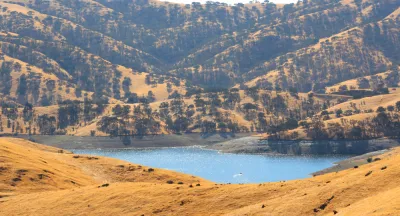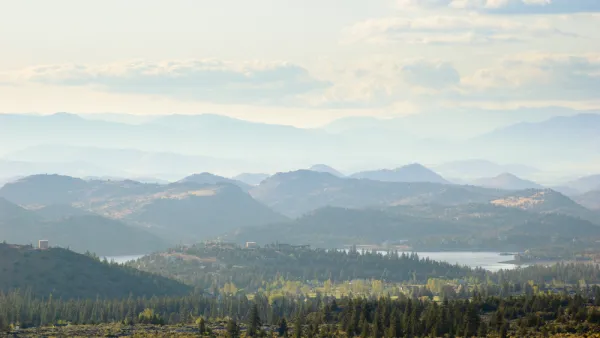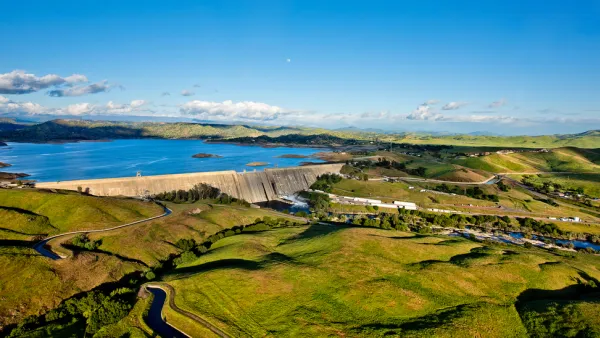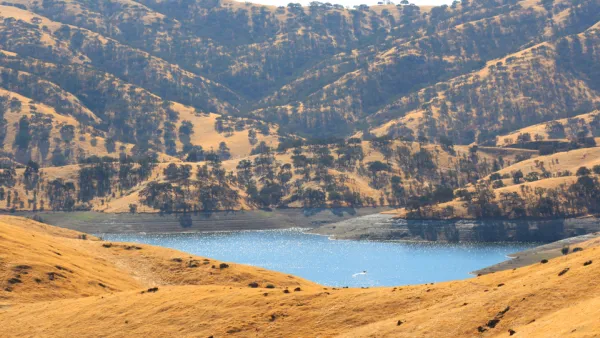California has used all its good dam sites, according to this column. And dams are unaffordable.

Columnist George Skelton has a message about California's water storage capacity: California shouldn't build any more dams.
California is building more dams, however, after state officials awarded $2.6 billion in funding for two dams, Sites and Temperance Flat, in 2018.
According to experts cited by Skelton, Sites is the only sensible dam location left in the state. "Sites would be an off-stream reservoir, so it wouldn’t block salmon from their spawning beds," explains Skelton. "A pipe would funnel Sacramento River water 14 miles west to the reservoir, which could hold 1.8 million acre-feet. It would be California’s seventh-largest reservoir."
Most dam sites in California face two major flaws: costs and silt. As for the price tag: "The way it works is this: Beneficiaries pay. Water used by farmers, manufacturers or homeowners is paid for by those people. Water that benefits the public — for recreation and flood control, for fish and the environment — is paid for by taxpayers." More dams mean higher water bills for the public.
Skelton describes silt as the "dirty secret about dams" and a "very major flaw." Reservoirs tend to fill up with silt, gradually reducing a reservoir's capacity as the dam cuts off the flow of water downstream. "A 2009 UC Berkeley report estimated that about 1.8 million acre-feet of storage space had been lost to silt. It found that nearly 190 reservoirs had lost more than 50 percent of their original capacity," according to Skelton.
Skelton made very similar points in a 2017 article, before the funding for Sites and Temperance Flats was approved. Today, Skelton argues that the future of water storage in California is underground. In 2017, he wrote this:
Operate the dams more efficiently. Recharge the aquifers. Expedite groundwater regulation. Capture storm runoff. Recycle. Desalinate.
Build Sites. Compromise and fix the delta.
One thing is not the answer: continuing to plant thirsty nut orchards in the arid San Joaquin Valley.
FULL STORY: Dirty little secret about dams and why state shouldn’t build more

Analysis: Cybertruck Fatality Rate Far Exceeds That of Ford Pinto
The Tesla Cybertruck was recalled seven times last year.

National Parks Layoffs Will Cause Communities to Lose Billions
Thousands of essential park workers were laid off this week, just before the busy spring break season.

Retro-silient?: America’s First “Eco-burb,” The Woodlands Turns 50
A master-planned community north of Houston offers lessons on green infrastructure and resilient design, but falls short of its founder’s lofty affordability and walkability goals.

Test News Post 1
This is a summary

Analysis: Cybertruck Fatality Rate Far Exceeds That of Ford Pinto
The Tesla Cybertruck was recalled seven times last year.

Test News Headline 46
Test for the image on the front page.
Urban Design for Planners 1: Software Tools
This six-course series explores essential urban design concepts using open source software and equips planners with the tools they need to participate fully in the urban design process.
Planning for Universal Design
Learn the tools for implementing Universal Design in planning regulations.
EMC Planning Group, Inc.
Planetizen
Planetizen
Mpact (formerly Rail~Volution)
Great Falls Development Authority, Inc.
HUDs Office of Policy Development and Research
NYU Wagner Graduate School of Public Service




























